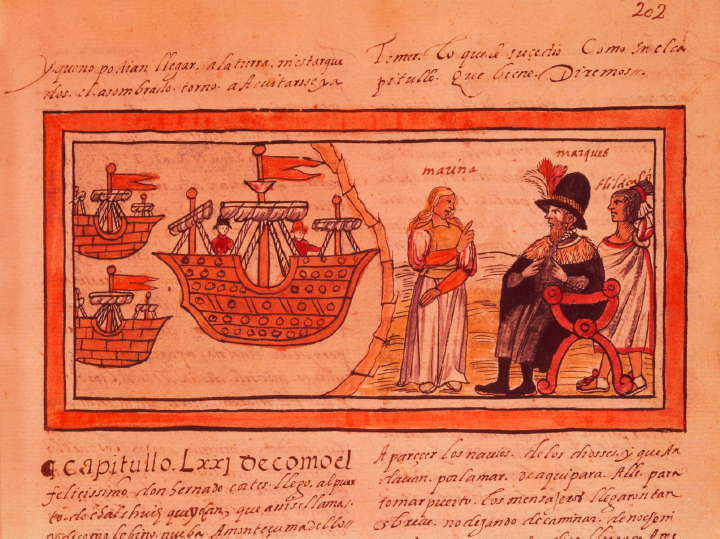Document 16.2
Diego Duran, “The Indian Princess Malinche or Doña Marina, Mistress of Hernán Cortés, Interpreting for Him,” ca. 1581
This illustration of Malintzin and Cortés from Diego Duran’s Historia de las Indias presents a sharp contrast to the depictions of Marina found in the Lienzo de Tlaxcala (see Document 16.1). Dressed in European clothing and shown with blonde hair, this Malintzin seems more Spanish than Indian. Moreover, she is not depicted as a mediator between two peoples. Instead, the illustration focuses the viewer’s attention on the personal relationship between Malintzin and Cortés, a decision that is underscored by the caption’s characterization of Malintzin as the “mistress of Hernando Cortés.” As you examine the image, think about the artist’s choices. How, for example, would you explain the decision to obscure Malintzin’s Indian ancestry?

Questions to Consider
- What might explain the decision to describe Malintzin as both an “Indian princess” and a “mistress”? What clues does this illustration offer in this context?
- What important facts about Malintzin and her relationship to Cortés and the Spanish are left unacknowledged in this illustration? Why?